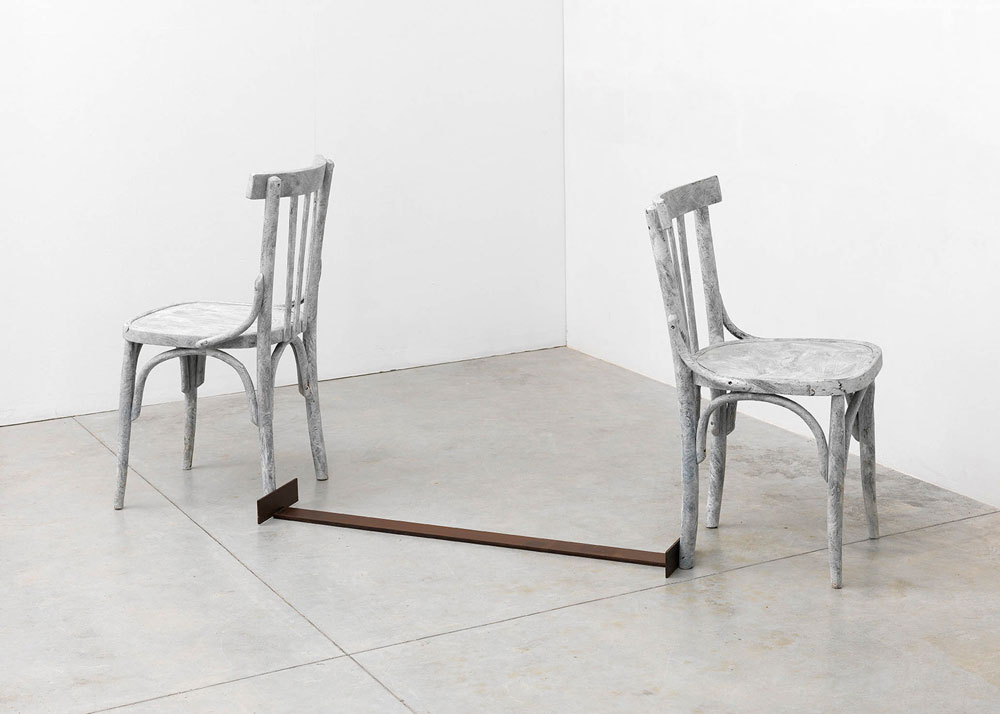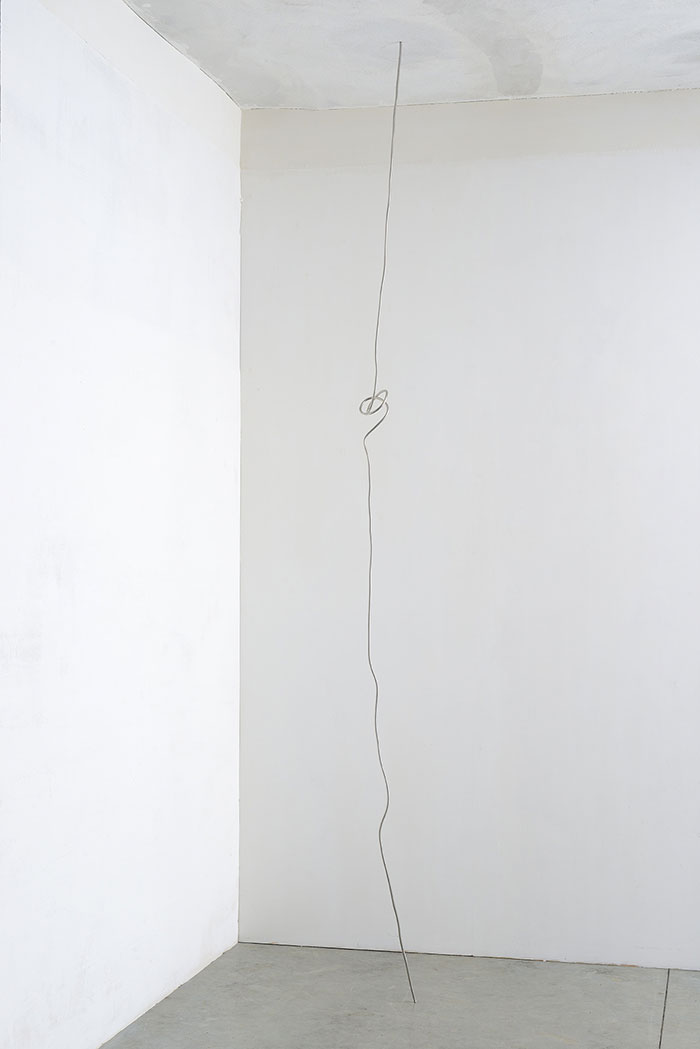ART-PRESENTATION: Paolo Icaro-Alla Ricerca Dell’equilibrio Perduto
 Paolo Icaro, born in 1936 in Turin as Pietro Paolo Chissotti, is an Italian artist known for his sculptures and paintings and one of the youngest representatives of the Italian art movement Arte Povera. His work makes an utterly original contribution to the languages that developed in the 1960s and 1970s, such as Arte Povera, Conceptual Art and Process Art, with particular impact on the renewal of contemporary sculpture.
Paolo Icaro, born in 1936 in Turin as Pietro Paolo Chissotti, is an Italian artist known for his sculptures and paintings and one of the youngest representatives of the Italian art movement Arte Povera. His work makes an utterly original contribution to the languages that developed in the 1960s and 1970s, such as Arte Povera, Conceptual Art and Process Art, with particular impact on the renewal of contemporary sculpture.
By Efi Michalarou
Photo: Galleria Massimo Minini Archive
Paolo Icaro’s solo exhibition “Alla ricerca dell’equilibrio perduto” is no longer just about space, it is a dynamic research. Four different attempts to achieve stability: the first one points towards the sky, visually connecting the Nadir and the Zenith; it is an upward path, a segment of our journey to the sky. The second is circular, centripetal and centrifugal, an eccentric neuronal tension, a round trip which, to be complete, spins on its axis creating a complex orbit. The third is a space (made) of space, physical, an uninterrupted single volume which expands around us and is cut, sculpted, hacked into basic shapes that, like Russian dolls, seek their balance between the inside and the outside. Lastly: total space, the point of no return, the terminal station of a journey that we just have to embark on. Paolo Icaro studied music and in 1955 enrolled in the Faculty of Arts at the University of Turin. Having dropped out of university, in 1958 he started to practicing sculpture in Umberto Mastroianni’s workshop. In 1960 he moved to Rome, where he held his first solo exhibition at Galleria Schneider in 1962. In 1966 he moved to New York, where he lived until 1968. In America he created his “Forme di spazio: (1967), immediately rechristened Gabbie, metal profile structures in which, instead of occupying the space, the sculpture becomes a place, the origin of space. In 1967 he held a one-man show at Galleria La Tartaruga in Rome and was invited by Germano Celant to take part in the exhibition Arte Povera Im-spazio, which took place at Galleria La Bertesca in Genoa – the city where he would move on his return to Italy. In 1968 he held a solo exhibition at Galleria La Bertesca whose title, “Faredisfarerifarevedere”, is paradigmatic of his poetics. Between 1968 and 1969 he took part in the main exhibitions of international artistic avant-garde, which sealed trends such as Arte Povera, Conceptual Art and Process Art. In 1971 he moved back to the US, to Connecticut, where he remained for the whole decade. During the 1970s he created cycles of works such as “I luoghi del punto” and “Misure intime”, pathways to measuring the body which varied in their use of different plastic materials. At this point he began to work with plaster, a material that affects time, preserving the print of the rapid gesture that moulded it. At the start of the 1980s he moved back to Italy permanently. In October 2007 he was invited by Luigi Ballerini to create a permanent piece for the Italian Department at UCLA, the University of California in Los Angeles.
Info: Curator: Chiara Bertola, Galleria Massimo Minini, Via Apollonio, 68, Brescia, Duration: 25/11/18-31/1/19, Days & Hours: Mon-Fri 10:30-19:30, Sat 15:30-19:30, www.galleriaminini.it

